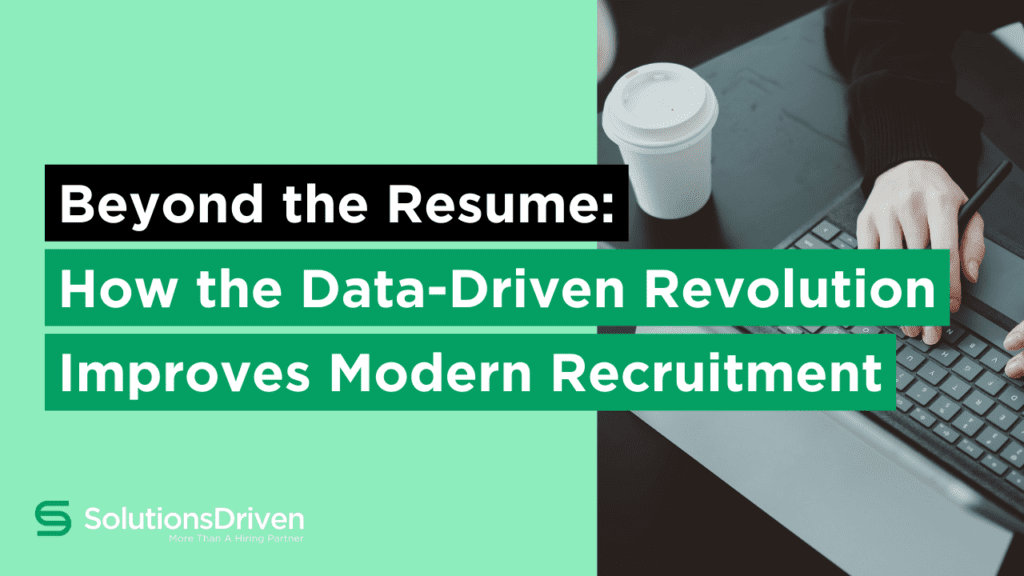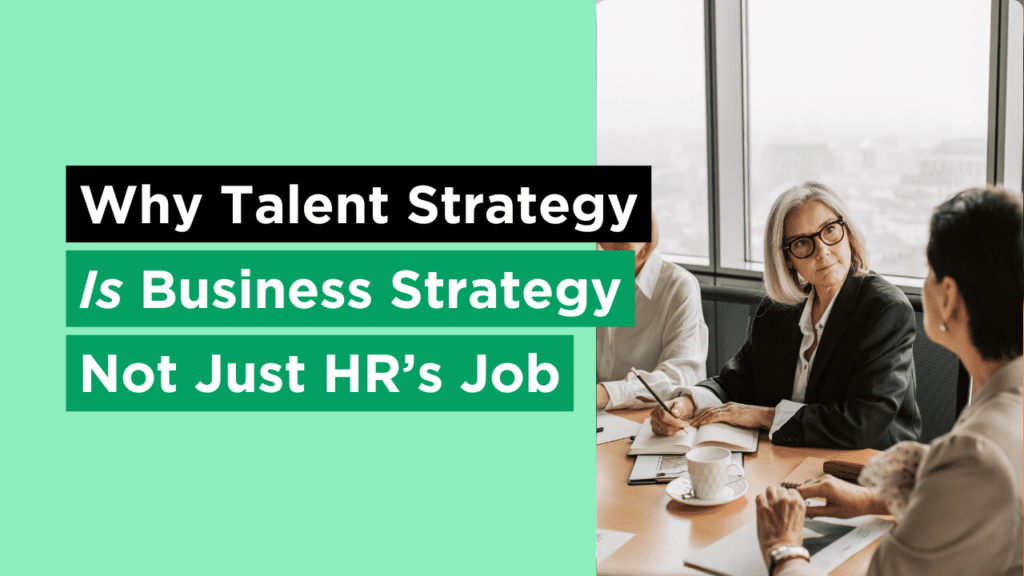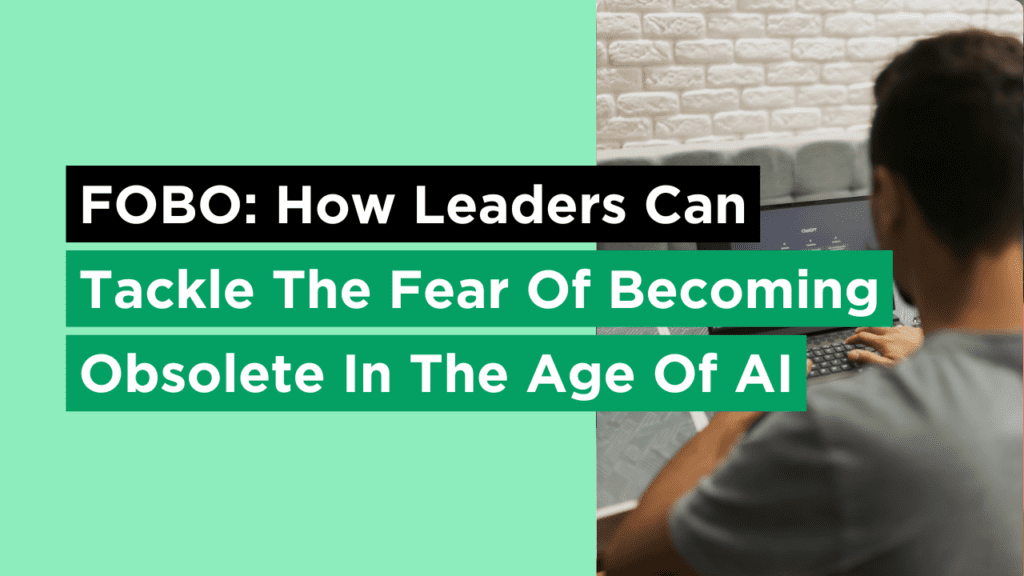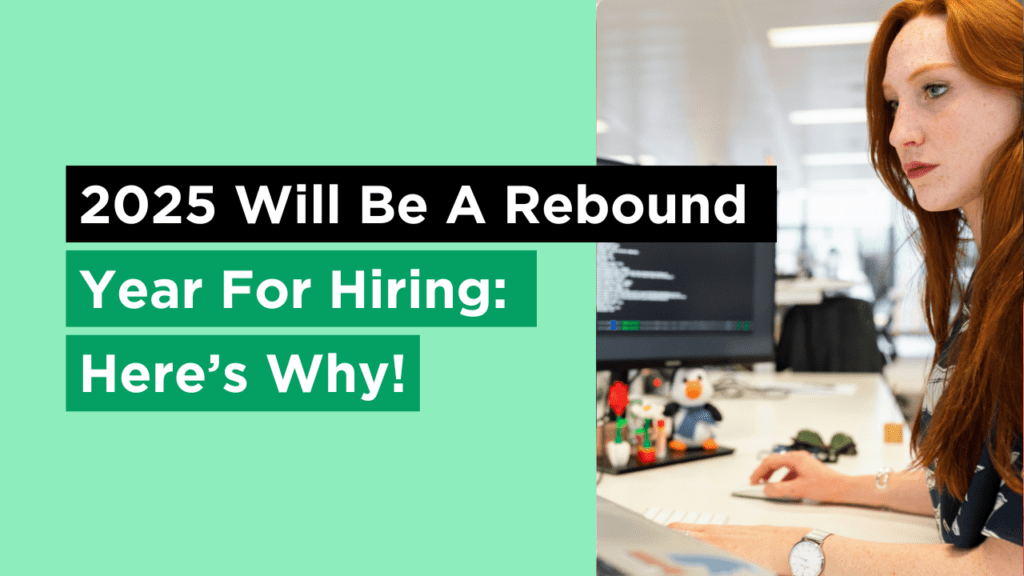To be the first to hear about our latest blogs, whitepaper releases, hiring enablement podcast episodes and get exclusive event invites, join our Exclusive Hiring Enablement Community.
The traditional resume or CV – a one to two-page document detailing qualifications, experiences, and skills – has long been the basis of hiring processes. It provides employers with a snapshot of potential candidates, helping them sift through the sea of applicants. However, as we recently uncovered in our white paper, The Evolution of Recruitment Strategies in a Dynamic Market, times are changing.
Enter the data-driven revolution. This shift isn’t just enhancing the hiring process – it’s fundamentally reshaping it. With data entering every aspect of our lives, it’s no surprise that it’s making its mark on recruitment too.
As we navigate an increasingly digital world the effectiveness of traditional recruitment practices, including the CV, are being questioned. In this article we’ll unravel how data-driven recruitment is changing the landscape, what it means for both employers and job seekers, and how it’s pushing us to look beyond traditional CVs.
This journey into the future of recruitment promises to provide valuable insights and strategies for staying ahead in this evolving field. So, let’s dive in and explore the data-driven revolution in recruitment.
The Limitations of CVs
The CV has been a long-standing pillar in recruitment, acting as the primary tool for presenting candidates’ qualifications and experiences. For decades, employers have leaned heavily on this document, using it as a filter to narrow down the pool of applicants.
However, the CV comes with its own set of challenges. While it provides an overview of a candidate’s background, it offers limited insights into their personality, potential, and cultural fit. This traditional approach often overlooks soft skills and potential, which are increasingly vital in today’s dynamic work environment.
And it’s these limitations that highlight the need for a more comprehensive approach. Employers need deeper insights into candidates, understanding not just what they’ve done, but who they are and what they could bring to the table. This calls for a shift from purely resume-based recruitment to a more holistic, data-driven method.
The Rise of Data-Driven Recruitment
Data-driven recruitment refers to the use of data analysis and predictive analytics in hiring practices. It’s about using vast amounts of information – from social media profiles and online activity to performance metrics and psychometric tests – to provide a fuller picture of candidates.
This revolution is fuelled by advancements in tech, including artificial intelligence (AI), machine learning, and big data. These tools allow for the collection, analysis, and interpretation of large data sets, enabling recruiters to make more informed decisions. And bring real results – according to an article by Recruiter, data can reduce the time to find potential candidates by up to a huge 80%.
Several companies are already reaping the benefits of data-driven recruitment. For instance, Google’s People Analytics team uses data to make hiring decisions, leading to improved employee performance and retention. Similarly, LinkedIn uses predictive analytics to identify potential candidates, enabling recruiters to proactively reach out to them.
Examples like these provide a glimpse into the future of recruitment – one that’s more efficient, informed, and holistic. Through data-driven recruitment, we can look beyond CVs and tap into the full potential of candidates.
The Role of Big Data in Talent Acquisition
Big data, with its ability to process vast amounts of information quickly and accurately, provides recruiters with a broader talent pool. It allows us to analyse various additional sources – such as social media platforms, job boards, and professional networks – to identify potential candidates.
Then there’s predictive analytics – a branch of big data – that can help us forecast hiring needs and candidate success. It uses historical data and machine learning algorithms to predict outcomes, enabling recruiters to make proactive and informed decisions.
There’s no doubt that data’s transformative power is significantly enhancing recruitment efficiency. With big data, we’re now able to automate routine tasks in the recruitment process, such as screening CVs and scheduling interviews, freeing up recruiters to focus on more strategic and human-centric aspects of their roles.
Data insights can also highlight what works and what doesn’t in the recruitment process. For example, data can reveal which sourcing channels attract the highest quality candidates, allowing recruiters to focus their efforts where they’re most effective. It can also identify bottlenecks in the recruitment process that cause delays, enabling organisations to streamline and improve their operations.
And let’s not overlook how data analytics can also improve the quality of hires. By analysing candidate data, recruiters can gain a deeper understanding of the characteristics and past performance of successful employees. This allows them to identify similar traits in prospective candidates, leading to better-quality hires.
Ultimately, a data-driven approach can significantly reduce costs. With data insights, recruiters can make more informed decisions, reducing the likelihood of expensive hiring mistakes. By streamlining the recruitment process, companies will automatically fill positions faster, again reducing the costs associated with vacancies.
Enhancing Candidate Experience Through Data
It’s not just recruiters that benefit from a data-driven recruitment process. It can provide a better experience for candidates too by offering more personalised communication and a more transparent process. By understanding their preferences and behaviours, recruiters can tailor messages to potential hires, making them more relevant and engaging.
Plus, data analysis can also be used to better match candidates with suitable jobs. By analysing a candidate’s skills, experiences, and preferences, recruiters can recommend jobs that more accurately align with their career goals.
And because candidates appreciate when their unique needs and preferences are taken into account, you’ll undoubtedly improve their perception of the company, and in turn, your reputation.
Overcoming Bias with Data-Driven Decision-Making
Unconscious bias can influence recruitment decisions. However, data-driven recruitment can help mitigate this by focusing on objective information rather than subjective impressions.
With a process based on data, recruiters can ensure that their hiring practices are fair and inclusive. Data can provide insights into valuable diversity metrics and help identify any areas for improvement.
Many organisations are leveraging data and innovative strategies to mitigate bias in their recruitment processes. Here are examples of how two well-known brands are doing it:
- Unilever: Unilever has taken significant steps towards mitigating bias by using artificial intelligence (AI) in its recruitment process. The company uses an AI platform to assess the skills and potential of candidates through digital games and video interviews. This approach allows them to focus on the abilities of the candidates rather than personal details that could lead to bias. As a result, Unilever has achieved a more diverse workforce and reduced the time taken to hire by an impressive 75%.
- Google: Google is another company that’s made strides in reducing bias in recruitment. They use a method known as “structured interviewing” where every candidate is asked the same set of questions in the same order, and their responses are scored using standardised guidelines. This approach minimises the impact of unconscious biases and ensures that hiring decisions are based on objective data rather than subjective impressions. Google’s strategy has not only improved the fairness of its hiring process but has also led to the recruitment of highly talented individuals who may have been overlooked in a less structured process.
These case studies demonstrate that with the right tools and commitment, it is possible to mitigate bias in recruitment processes and create more diverse and inclusive workplaces.
The Evolving Role of Recruiters in a Data-Driven World
In our increasingly data-driven world, the role of recruiters is evolving. While interpersonal skills remain crucial, there’s an increasing demand for data literacy. As a result, recruiter’s roles and skillsets are changing – they’re now expected to be able to interpret complex data and use it to drive hiring decisions.
And that’s why it’s important for companies to invest in training programs to equip their recruiters with these new skills. It’s not just about imparting technical knowledge but providing recruiters with a conceptual understanding of how to use data effectively in hiring.
Competency-based recruiter training is a great solution as it focuses on skills development, concentrating on one skill area at a time. It’s an approach which allows recruiters to gradually build their proficiency in handling and interpreting data.
Courses could cover a range of topics, from the basics of data interpretation to more advanced concepts like predictive analytics. For example, recruiters could learn to use data to predict trends in talent availability or identify the most effective recruitment channels.
Or, it could include learning how to use specific tools and systems that aid in data-driven recruitment.
Another crucial aspect is learning to balance data competency with the human touch. While data can provide valuable insights, recruiters should also be trained to use their judgment and interpersonal skills. While data can provide valuable insights, it’s important to remember that it should complement, not replace, human intuition. A successful recruiter will be able to balance data-backed insights with their own judgement and experience.
Challenges and Considerations
Like everything, despite the many benefits of data-driven recruitment, it also comes with challenges. Firstly, it raises important questions about data privacy and ethics. The answer lies in companies ensuring they’re compliant with data protection laws, such as GDPR, and that they’re using data responsibly and transparently.
And let’s be realistic – transitioning to data-driven strategies is not always straightforward. It requires integrating new tools and processes into existing workflows, which may meet resistance from staff. Successful integration often involves change management and ongoing training and support. Especially as the technology underpinning data-driven recruitment is continuously evolving. To stay ahead, companies need to be adaptable and open to new tools and techniques. It’s about creating and encouraging an overall culture of learning and innovation.
It’s clear that a data-driven revolution is reshaping the recruitment industry. From aiding in talent sourcing to predicting future hiring trends, the use of data analytics and artificial intelligence has become an integral part of modern recruitment practices. And companies, like Unilever and Google, are already demonstrating how effective a data-led approach can be in creating diverse and inclusive workplaces.
The shift towards data competency among recruiters is not just a trend but a necessity. However, as we embrace this data-driven approach, let’s not forget the value of the human touch in recruitment. While data can provide valuable insights, it’s the recruiter’s understanding, empathy, and ability to connect with candidates on a personal level that often makes the difference.
If you want to know more about how technology and data are transforming recruitment, download our white paper, The Evolution of Recruitment Strategies in a Dynamic Market.






